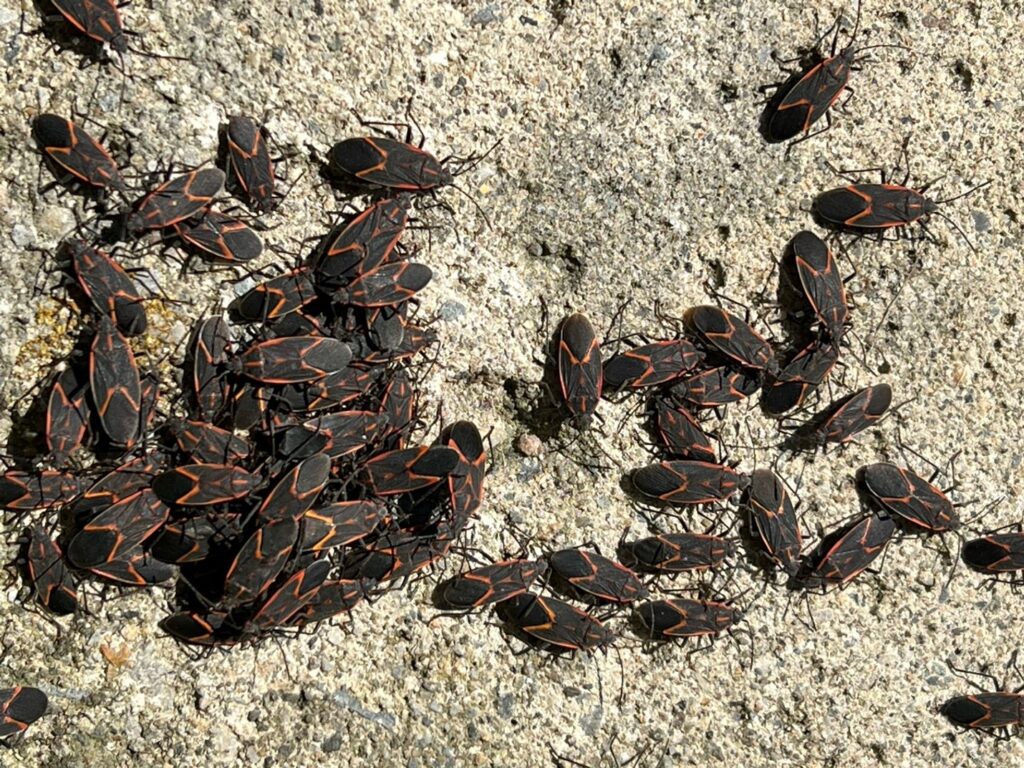How to Keep Stink Bugs and Boxelders Out of Your House
Discover How to Keep Stink Bugs and Boxelders Outside — Where the Pests Belong
Fall and winter are prime pest seasons as many critters and creepy, crawling things start looking for warm, cozy spots to nest for the winter. Two common offenders include boxelder and stink bugs.
Thankfully, these pests are relatively harmless — but annoying.
Although many people get confused about the two insects, the two different species have unique characteristics.
How can you tell the difference between the two pests? Check out a few tips and suggestions for how to keep stink bugs and boxelders out of homes and other buildings.
Stink Bugs vs. Boxelder Bugs: What’s the Difference?
Before it’s possible to figure out how to keep boxelder and stink bugs out of a house, it’s necessary to know which type of bug has invaded the space.
Length and coloring are two easy ways to spot the differences between these two pests. Boxelders are slightly shorter with red and brown torsos with off-white, bronze, black, or blue-hued markings on their backs.
What Do Boxelder Bugs Look Like?
Boxelder bugs are approximately 1/2-inch long with six legs and two antennae.
These pesky bugs have black, oval-shaped backs with three reddish stripes behind their heads and two more red stripes on each wing. Boxelder bugs drink sap from boxelder trees’ leaves, seeds, and twigs.

Boxelders tend to be problematic during the fall and spring. In the fall months, they start moving indoors to escape the cold. When spring arrives, the pest will return to the outdoors. Many homeowners and renters also find boxelder bugs indoors in late winter.
What Do Stink Bugs Look Like?
Stink bugs are invasive insects native to parts of Asia. These bugs average 1/2-inch long with oval, shield-shaped, mottled gray-brown or sometimes greenish backs. They have antennae and six legs that extend from the sides.
Aptly named, the term “stink bug” comes from the chemical released in their abdomen, causing a smelly or stinky odor.
This odor is also released when the bugs are crushed. Stink bugs tend to make a big stink — literally, in the fall, but they can also be active in late summer.
Are Stink Bugs and Boxelders Dangerous?
Neither boxelders nor stink bugs harm people, pets, or homes. Boxelders don’t bite, but they do have mouth parts that can puncture skin and create irritation similar to an insect bite. Additionally, boxelders’ fecal matter has a red hue that can stain clothing, drapes, and other materials.
As an agricultural pest, the brown marmorated stink bug can cause serious damage to fruit and vegetable crops. Feeding throughout the summer, stink bugs puncture holes into the fruit in order to feed. Leaving blemishes and dimples, the stink bugs’ feeding habits cause seed loss, as well as possible transmission of plant pathogens.
Why Get Rid of Boxelder Bugs and Stink Bugs
Neither bug is harmful, but they can quickly become a terrible nuisance.
Over the years, the stink bug population has increased due to the ideal climate for reproduction. In optimal conditions a stink bug can reach the adult stage in as little as 35 to 45 days. Female stink bugs can lay several hundred eggs in their lifetime. This pest population is expected to continue growing, as there seem to be no environmental factors slowing their distribution.
These statistics alone can cause nightmares.
The dead bodies of boxelder bugs attract insects like carpet beetles. That’s why it’s essential to use a professional pest control company to ensure thorough cleaning after removal.
How to Keep Stink Bugs and Boxelders Out of Your House
Prevention is essential for getting rid of boxelder bugs and stink bugs permanently. Preventive measures include:
- Sealing cracks around pipes, windows, doors, siding, chimneys, foundations, under wood fascia, etc.
- Applying silicone or silicone-latex caulk around skylights, electrical outlets, light switches, and door and window frames.
- Replacing damaged window and door screens.
- Trimming overgrown trees and removing branches that hang over the house.
- Installing yellow bulbs or low-pressure sodium exterior lighting instead of incandescent lights.
- Removing boxelder trees from the property.
Professional Pest Control
Although some do-it-yourself attempts can be helpful, it doesn’t replace professional pest control efforts.
Pest infestations should be handled by licensed pest control professionals. Skilled technicians can assess the situation, remove bugs, and ensure no traces are left behind to attract other insects to the home.
Catseye Pest Control uses advanced pest control techniques and customized solutions to help protect homes and businesses from the brown marmorated stink bug.
Beginning with a free inspection, our pest and nuisance wildlife control technicians investigate the home, business, or other structure to identify the type of pest invading your space. This step is also essential in determining how and why the pest is getting inside.
Then, a customized pest control solution is created that will help rid the space of the pest. This solution from Catseye can include a variety of items, like utilizing our Exclusion Systems, monitoring systems, and pest products.
Our techniques and solutions have been perfected over the course of nearly 30 years so that peace of mind can be restored for homeowners, property owners, and business owners.
Contact Catseye Pest Control
Contact Catseye for a no-cost inspection today. Based on those findings, Catseye technicians will create a customized treatment plan to remove the brown marmorated stink bug, treat the home, and maintain a pest-free environment.
The tailored solution will leave you feeling comforted knowing that these pest — and others cannot find their way inside in the future.
The post How to Keep Stink Bugs and Boxelders Out of Your House appeared first on Catseye Pest Control.
This article appeared first on Catseye Pest